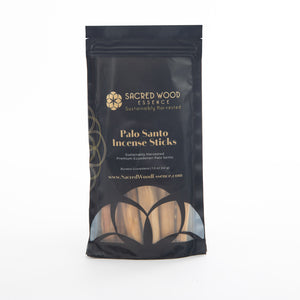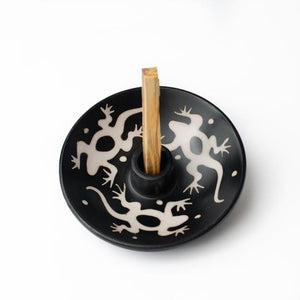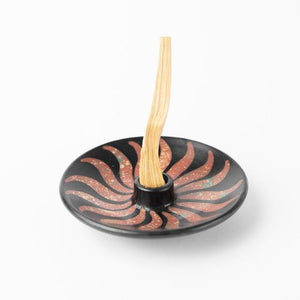Palo Santo Appropriation vs Appreciation
When honoring and enjoying palo santo in the ‘western world,’ are we participating in a well-intentioned but disrespectful case of cultural appropriation instead of the appreciation we intend? This has been on our minds here at Sacred Wood Essence a lot lately.
In the words of our company’s founder Erik Suarez, “I really feel like, with our sustainability and fair trade efforts, and the way we engage in the lives of the local people at the source, we’re promoting cultural appreciation, not appropriation. But it’s so important to know the difference!”
Defining Cultural Appropriation
What exactly is cultural appropriation? This term refers to the use of objects or elements of a non-dominant culture in a way that:
- Disrespects their original meaning
- Fails to give credit to their source
- Reinforces stereotypes
- Contributes to oppression
- Or profits at locals’ expense
To read more on this topic, this website is a great place to start!
Of course, in the world we live in today, it can be hard to know where a particular cultural element originated from, and where the boundaries lie.
Is it an appropriation of Italian culture to eat pizza? Is it an appropriation of Japanese culture to learn karate? No, of course not!
We appreciate Italian and Japanese cultures by celebrating their contributions to our beautiful, confusing, eclectic, and interwoven global reality.
So what about Palo Santo?
If we can eat pizza, share yerba mate, and learn karate without causing conflict, why can’t we burn this sacred wood from the forests of Ecuador?
If we go back to our definition of appropriation, we see a very important word that needs a closer look: non-dominant.
When we appreciate an item, activity, or expression from a non-dominant culture—such as burning palo santo, listening to reggae, or surfing Oahu’s north shore—we need to step more lightly.
We must acknowledge historical wrongs and address their impacts on current systems. By listening to locals, honoring traditions, supporting communities, and giving credit and compensation at every turn, we can support a cultural exchange that truly is appreciation, not appropriation.
How did you first hear about Palo Santo?
Many western fans of palo santo first learned about this aromatic wood through their explorations of the indigenous healing modalities of the Amazon basin. Guides and shamans often burn palo santo to cleanse space before and during rituals.
While this is one of the many beautiful ways in which palo santo is used, it is not the only way. In Ecuador, for instance, palo santo is an integral part of everyday life. Families frequently burn it to ward off biting insects.
We never want to disrespect the traditional ways in which a plant is used. And yet it’s also important to avoid flattening the lives and experiences of local peoples into a single static image.
Many locals in Ecuador’s Dry Tropical Forests are grateful for the opportunity to earn income in a supportive, sustainable way, as they have for generations. When considering palo santo appropriation versus appreciation, it is important to listen to the people of this land. To hear their own voices on this matter, watch this video!
Walking the Walk: Respecting People, Traditions, and the Earth
This all sounds great, right? But how do we at Sacred Wood Essence put our money where our mouth is?
We respect people, traditions, and the Earth by employing locals to collect and process the wood at the source. This creates local abundance. It keeps families together. And it brings hope to marginalized rural communities.
Also, we fund tree-planting efforts that ensure the long-term viability of the Dry Tropical Forest.
By paying fair prices for the finished product, we ensure the people of the source receive living wages for their contributions.
We share and promote the many different ways this sacred wood is used by the people of Ecuador and beyond.












